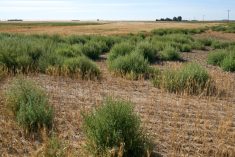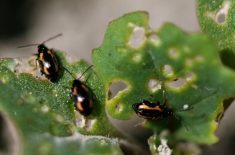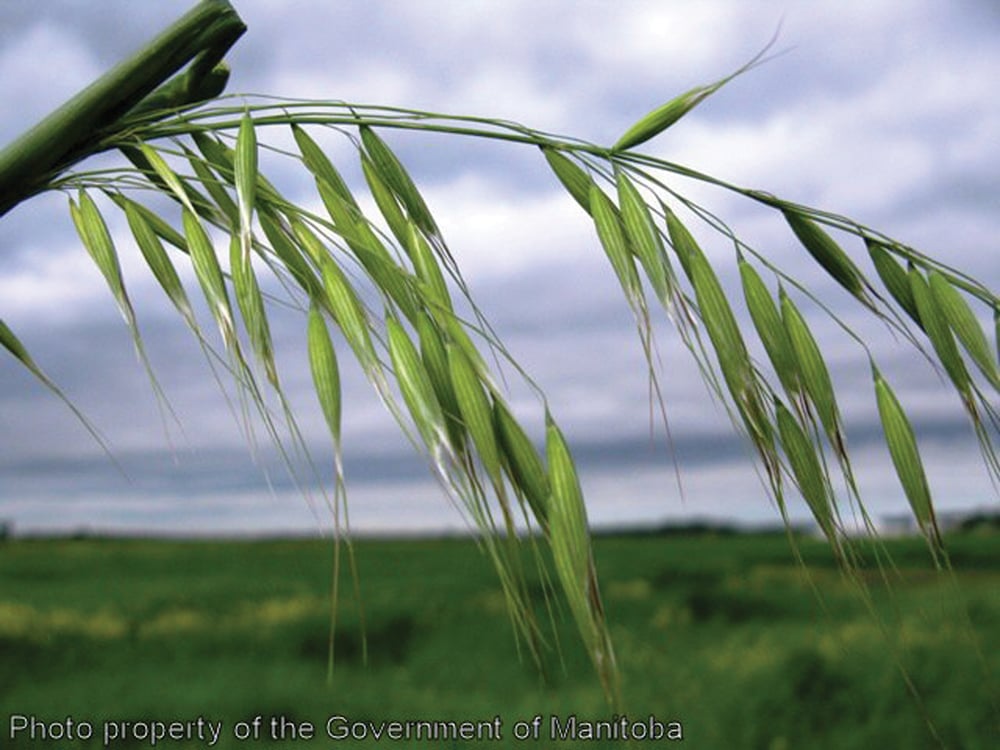The Blue Book is known for its comprehensive list of pesticide products for use on major field crops, but the crop protection manual has “vast amounts of additional information,” says its co-editor.
“These pages contain the hidden gems of information that are valuable to producers,” said provincial crop specialist Harry Brook.
One example is herbicide resistance in weeds, especially wild oats and kochia.
“Every year we hear of resistance showing up in new weeds to an increasing list of herbicidal modes of action,” said Brook. “How do you know if you are actually rotating herbicide modes of action? You will find on pages 42 to 45 a table with all the herbicides in the Blue Book classified and listed by their modes of action.
Read Also

Farming Smarter receives financial boost from Alberta government for potato research
Farming Smarter near Lethbridge got a boost to its research equipment, thanks to the Alberta government’s increase in funding for research associations.
“This table is an excellent resource to use to ensure you are varying the modes of action and, hopefully, delaying the presence of herbicide resistance on your farm. It links to the herbicide group numbers listed in the title bars of every pesticide. Page 41 also lists the current weed species where resistance has been found.”
The Blue Book also contains contact information for most of the companies whose products are listed within the manual and a link on the downloadable version to Health Canada’s Pest Management Regulatory Agency’s search engine.
“There, you can search for the labels of any pesticide product in Canada,” he said. “It can be useful if you are looking for control of a particular weed. Searching for mention of that weed will pull up all mentions of the weed in all pertinent labels.”
The manual also includes informative illustrations showing how to number leaf stages for grassy, broadleaf and legume plants. Those help clarify when a herbicide should be safely applied to the crop and weed.
There’s also a primer on calibrating the sprayer, nozzle selection and mixing amounts for small sprayers.
“For those not that familiar, there is a section on tank mixes, definition of adjuvants, surfactants and spreaders as well as the mixing order to follow,” said Brook. “Each pesticide requires a certain order of mixing depending on product formulation. It also includes sprayer cleanout procedures needed, which vary and depend on the products being sprayed. Oil-based product needs a different cleanout process than water soluble or emulsifiable concentrates.”
The Farmer Pesticide Certificate Program is also explained in the manual.
“It is valuable for those who need access to restricted products to treat grain for stored grain pests and is also required by several producer groups as due diligence in the use of pesticides.”
Pesticide disposal sites are listed across the province to ensure safe disposal of containers after application. First aid, pollinator protection, grazing and haying restrictions, water quality and nitrate poisoning of livestock are all topics mentioned in the front sections.
“Everyone uses the list of pesticides in the Blue Book as well as the selector charts with pests and crops,” said Brook. “Get the most out of this publication this winter and spend some time in the unknown country before the product lists. It may surprise you.”
The next Blue Book is expected to be out in early spring.















